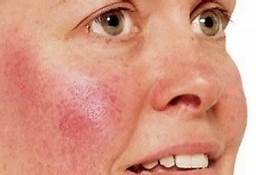Rosacea symptoms are not that easy to miss or to mistake for anything else. Usually, in the first stages, all rosacea symptoms can be believed to be due to one overexerting oneself, but unlike such physical manifestations, the rosacea symptoms do not disappear after a while. The typical rosacea symptoms include flushing in the face, excessive blushing, redness, a burning sensation wherever the redness appears, accompanied by red bumps on the skin and, in the most severe cases of rosacea, even some small cysts.
[AcneRosacea]
The real issue with any one of these rosacea symptoms is that they can never be trusted. Why is that? Simple. Rosacea is not a condition that can be cured, it exists in the body of the patient for his or her entire life. Basically, the only thing that the symptoms can show is that the patient is in the middle of a rosacea crisis, not that he or she has it and, in some cases, the symptoms do not even point out how serious the condition really is. No, rosacea is not life threatening, but it can be very annoying and it can lead to serious scaring without the proper treatment.
In general, if you watch the problem areas, like the forehead, cheeks, nose and chin, and you notice something amiss, you should visit a dermatologist as soon as possible, so as to avoid the worsening of the condition.
The problem with the rosacea treatment is that it does not actually work. Why? Well, basically, rosacea has no cure. The rosacea treatment schemes that are proposed to the sufferer by his or her attending physician have only one simple purpose: they will alleviate the symptoms. However, they will not eliminate the disease. The most common rosacea treatment options are the following ones:
- If the case of rosacea is not serious, your dermatologist might recommend some sort of mild moisturizers, cleaners, sunscreens and other products, all with the goal of improving the health of your skin, without using drugs that could do more harm then good.
- If the rosacea skin problem is getting out of hand, your attending physician can easily prescribe you a topical cream (easily applied directly on the affected area, once or twice a day, it helps to reduce the swelling, the feeling of pins pushing on your skin and the redness), some sort of oral antibiotics (this type of antibiotics have a very unusual characteristic – they have exceptional anti – inflammatory properties – for which they are used in the treatment of this disease, rather than their bacterial killing properties) or isotretinoin, a substance that is better used under the strict supervision of a specialist.
It might take a while, but the direst of rosacea symptoms will disappear. All that the patient is left of after a bout of treatment is a slight redness that, unfortunately, never goes away.




